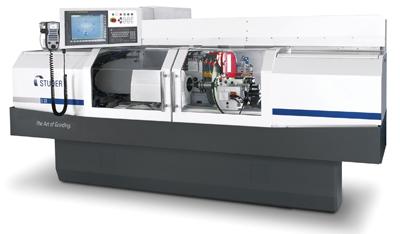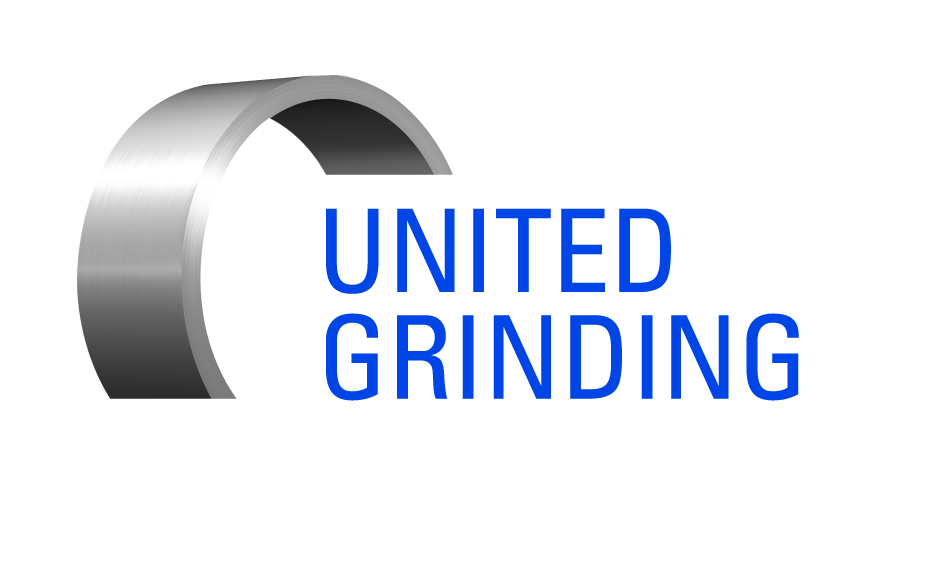
United Grinding Technologies Inc. announces the introduction of a new and advanced addition to its Studer line of high-performance CNC universal ID/OD cylindrical grinders, the new S33.
Modular design for quick setup and changeover, state-of-the-art digital control and drive systems and user-friendly step-by-step programming make the new S33 a remarkably flexible solution to a wide variety of internal and external cylindrical grinding applications. From high throughput OD production lines to small-scale job shops, the new S33 has the ability to reduce changeover times, speed up grinding processes and deliver consistent precision at an affordable cost.
The S33 has been enhanced and designed to take into account the specific needs of the North American market (automotive OEMs and Tier One suppliers), in that the new S33 reflects the expressed desire for a machine to address internal and external applications in a single platform.
According to Hans Ueltschi, vice president, "The level of versatility and flexibility increasingly requested by this important market is significantly and uniquely addressed in design and capabilities of this new machine. The S33 clearly demonstrates our full commitment to tailor products around the explicit requirements of our customers."
Center height is 175mm. Between-centers grinding length is either 650mm or 1,000mm. OD wheel size: 500mm in diameter x 63mm x 203mm in diameter. Chuck capacity between centers is 80 kg. to 120 kg.
The new Studer S33 grinder is now equipped with latest generation of high frequency internal grinding spindles. The spindles turn this universal cylindrical grinder into an effective internal grinding machine with high torque and over a large speed range. The machine can now grind with speeds up to 120,000 RPM, thus allowing the grinding of bores down to 0.625". A "flat" torque curve on this type of spindle will mean fewer spindles over a larger speed range. This reduces setup time and investment costs.
The basic wheelhead can be indexed at 0 degrees or 30°For straight and angular plunge grinding. A universal turret wheelhead swivels manually or automatically, permitting external, internal and face grinding of workpieces in a single setup. The machine features a high precision Hirth coupling B-axis with a 1 degree indexing capability. The turret head repeats in .08 arc seconds. This allows for extreme accurate ID to OD run-out and concentricity.
V and flat guideways are coated with abrasion-proof Granitan S200 and provide high vibration dampening and superior rigidity. The machine base of Studer-developed Granitan S103 delivers outstanding vibration dampening, rigidity and strength, as well as excellent chemical stability and thermal compensation.
Digital direct-drive, three-phase servomotors with 40-mm diameter prestressed, precision ballscrews power the X- and Z-axes. Cross slide X-axis travel is 285mm at speeds ranging to 10,000mm/min. Linear resolution is 0.0001mm. Distance between slideways is 280mm. Z-axis slide travel is up to 1,150mm. Speed and linear resolution are respectively 20,000mm/min and 0.0001mm. Z-axis distance between slideways is 200mm. Z-axis table tilts up to 8.5°For high-precision grinding of tapers.
Direct drive spindle turret wheelhead is powered by a 10 HP motor and has high-precision roller bearings for precise, high-resistance, maintenance-free operation. Peripheral speed up to 50 m/sec with infinitely adjustable speed control to 3200 RPM. Workpiece spindle, with high-precision roller bearings, handles grinding between dead centers as well as live grinding with revolving spindle. Precision control permits fine adjustment of cylindricity during grinding operations to +/- 40µm.
Guaranteed tolerance precision: 0.0004mm on roundness and 0.0025mm straightness deviation over a length of 650mm or 1,000mm.
The new S33 features state-of-the-art FANUC 00i-TD digital control and axis drive components. Machine operation, setup, changeover, dressing and programming of even complex parts are easily accomplished through the innovative, step-by-step Windows-based StuderWin software with graphical operator interface and 15" color touch screen for CNC control with integrated PC, which allows operators simply to connect grinding cycles to one another and add necessary numerical values. The control then generates the machine program automatically. Advanced manual programming in G code is of course also possible. Programming is done directly at the machine or off-line and then downloaded to the machine control. Process parameters can be changed on the fly, while the machine runs, without affecting the workpiece program.
The S33 control package features proven application-specific Studer grinding cycles for diameters, shoulders (left and right), tapers (negative and positive) and contours. The control also features a technology calculator for definition of process parameters, integrated in-process gaging (optional) and integrated programming of the smartLoad system (optional).
Contact Details
Related Glossary Terms
- centers
centers
Cone-shaped pins that support a workpiece by one or two ends during machining. The centers fit into holes drilled in the workpiece ends. Centers that turn with the workpiece are called “live” centers; those that do not are called “dead” centers.
- chuck
chuck
Workholding device that affixes to a mill, lathe or drill-press spindle. It holds a tool or workpiece by one end, allowing it to be rotated. May also be fitted to the machine table to hold a workpiece. Two or more adjustable jaws actually hold the tool or part. May be actuated manually, pneumatically, hydraulically or electrically. See collet.
- computer numerical control ( CNC)
computer numerical control ( CNC)
Microprocessor-based controller dedicated to a machine tool that permits the creation or modification of parts. Programmed numerical control activates the machine’s servos and spindle drives and controls the various machining operations. See DNC, direct numerical control; NC, numerical control.
- cylindrical grinding
cylindrical grinding
Grinding operation in which the workpiece is rotated around a fixed axis while the grinding wheel is fed into the outside surface in controlled relation to the axis of rotation. The workpiece is usually cylindrical, but it may be tapered or curvilinear in profile. See centerless grinding; grinding.
- dressing
dressing
Removal of undesirable materials from “loaded” grinding wheels using a single- or multi-point diamond or other tool. The process also exposes unused, sharp abrasive points. See loading; truing.
- flat ( screw flat)
flat ( screw flat)
Flat surface machined into the shank of a cutting tool for enhanced holding of the tool.
- grinding
grinding
Machining operation in which material is removed from the workpiece by a powered abrasive wheel, stone, belt, paste, sheet, compound, slurry, etc. Takes various forms: surface grinding (creates flat and/or squared surfaces); cylindrical grinding (for external cylindrical and tapered shapes, fillets, undercuts, etc.); centerless grinding; chamfering; thread and form grinding; tool and cutter grinding; offhand grinding; lapping and polishing (grinding with extremely fine grits to create ultrasmooth surfaces); honing; and disc grinding.
- grinding machine
grinding machine
Powers a grinding wheel or other abrasive tool for the purpose of removing metal and finishing workpieces to close tolerances. Provides smooth, square, parallel and accurate workpiece surfaces. When ultrasmooth surfaces and finishes on the order of microns are required, lapping and honing machines (precision grinders that run abrasives with extremely fine, uniform grits) are used. In its “finishing” role, the grinder is perhaps the most widely used machine tool. Various styles are available: bench and pedestal grinders for sharpening lathe bits and drills; surface grinders for producing square, parallel, smooth and accurate parts; cylindrical and centerless grinders; center-hole grinders; form grinders; facemill and endmill grinders; gear-cutting grinders; jig grinders; abrasive belt (backstand, swing-frame, belt-roll) grinders; tool and cutter grinders for sharpening and resharpening cutting tools; carbide grinders; hand-held die grinders; and abrasive cutoff saws.
- in-process gaging ( in-process inspection)
in-process gaging ( in-process inspection)
Quality-control approach that monitors work in progress, rather than inspecting parts after the run has been completed. May be done manually on a spot-check basis but often involves automatic sensors that provide 100 percent inspection.
- inner diameter ( ID)
inner diameter ( ID)
Dimension that defines the inside diameter of a cavity or hole. See OD, outer diameter.
- modular design ( modular construction)
modular design ( modular construction)
Manufacturing of a product in subassemblies that permits fast and simple replacement of defective assemblies and tailoring of the product for different purposes. See interchangeable parts.
- outer diameter ( OD)
outer diameter ( OD)
Dimension that defines the exterior diameter of a cylindrical or round part. See ID, inner diameter.
- tolerance
tolerance
Minimum and maximum amount a workpiece dimension is allowed to vary from a set standard and still be acceptable.

